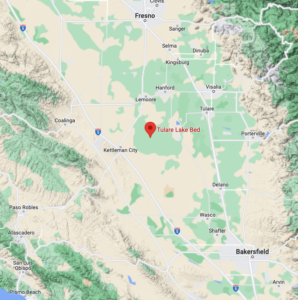Avian botulism, a lethal disease for birds, has been found spreading throughout Tulare Lake. The disease is caused by bacteria that thrive in shallow, warm waters with decaying organic matter.
The bacteria that causes the disease is found naturally in wetland soil. But it doesn’t produce the toxin that causes the disease unless environmental conditions are right. As temperatures soared in the San Joaquin Valley over the past few months, Tulare Lake warmed, causing perfect conditions for the disease to spread.
Neighboring wildlife areas, such as the Kern National Wildlife Refuge, often have standing, shallow water for bird habitat. The difference is, the water flow in refuges can be controlled and changed if an outbreak is suspected, wrote a spokesperson for the California Department of Fish and Wildlife (CDFW) in a statement.
Part of the problem is not just the warming temperatures, but dead, decaying animals in the lake. Any decaying organic matter can fuel the bacteria, wrote the spokesperson in a statement.
The lakebed was home to a Foster Farms chicken operation. An unknown number of those chickens died in the floodwater.
But the state spokesperson said that was probably not a factor in the spread of the disease because those chickens likely decomposed and were eaten by other animals before the weather warmed.
Foster Farms declined to answer any questions about its operation in the lakebed.

Mitigation of the outbreak falls on CDFW. The department is conducting surveillance via airboats and removing dead and affected birds, wrote the spokesperson. The airboat surveys are also driving birds out of hot spots, reducing exposure, they wrote.
The Kern National Wildlife Refuge is the base of the department’s operations and is providing housing and facilities for bird rehabilitation.
CDFW is also collaborating with other agencies. A response team has been assembled and includes staff from the California Office of Emergency Services, the U.S. Fish and Wildlife Service, the California Natural Resources Agency, the Federal Emergency Management Agency (FEMA) and the California Waterfowl Association.
CDFW is paying for the mitigation efforts out of its budget, wrote the spokesperson. Although the spokesperson said the agency expects reimbursement from FEMA.
Staff from the California Waterfowl Association are also supporting cleanup and surveillance by purchasing supplies.
Funding for the rehabilitation of affected birds hasn’t been determined yet, wrote the spokesperson.
Local agencies have little to do with the outbreak.
The Kings County Office of Emergency Services is not involved, said Abraham Valencia, Kings County office of emergency services manager. And it’s not a major concern for the county.
“The only thing concerning would be if somebody comes across a dead fish or a dead bird and they eat it,” said Valencia. “But the areas around Tulare Lake, they’re not really populated.”
The county is monitoring levees, water levels and is receiving reports on the botulism from the state, said Valencia.
Share this:
- Click to share on Facebook (Opens in new window)
- Click to share on Twitter (Opens in new window)
- Click to share on LinkedIn (Opens in new window)
- Click to share on Reddit (Opens in new window)
- Click to share on Tumblr (Opens in new window)
- Click to share on Pinterest (Opens in new window)
- Click to share on Pocket (Opens in new window)
- Click to share on Telegram (Opens in new window)
- Click to share on WhatsApp (Opens in new window)
- Click to print (Opens in new window)









You must be logged in to post a comment.